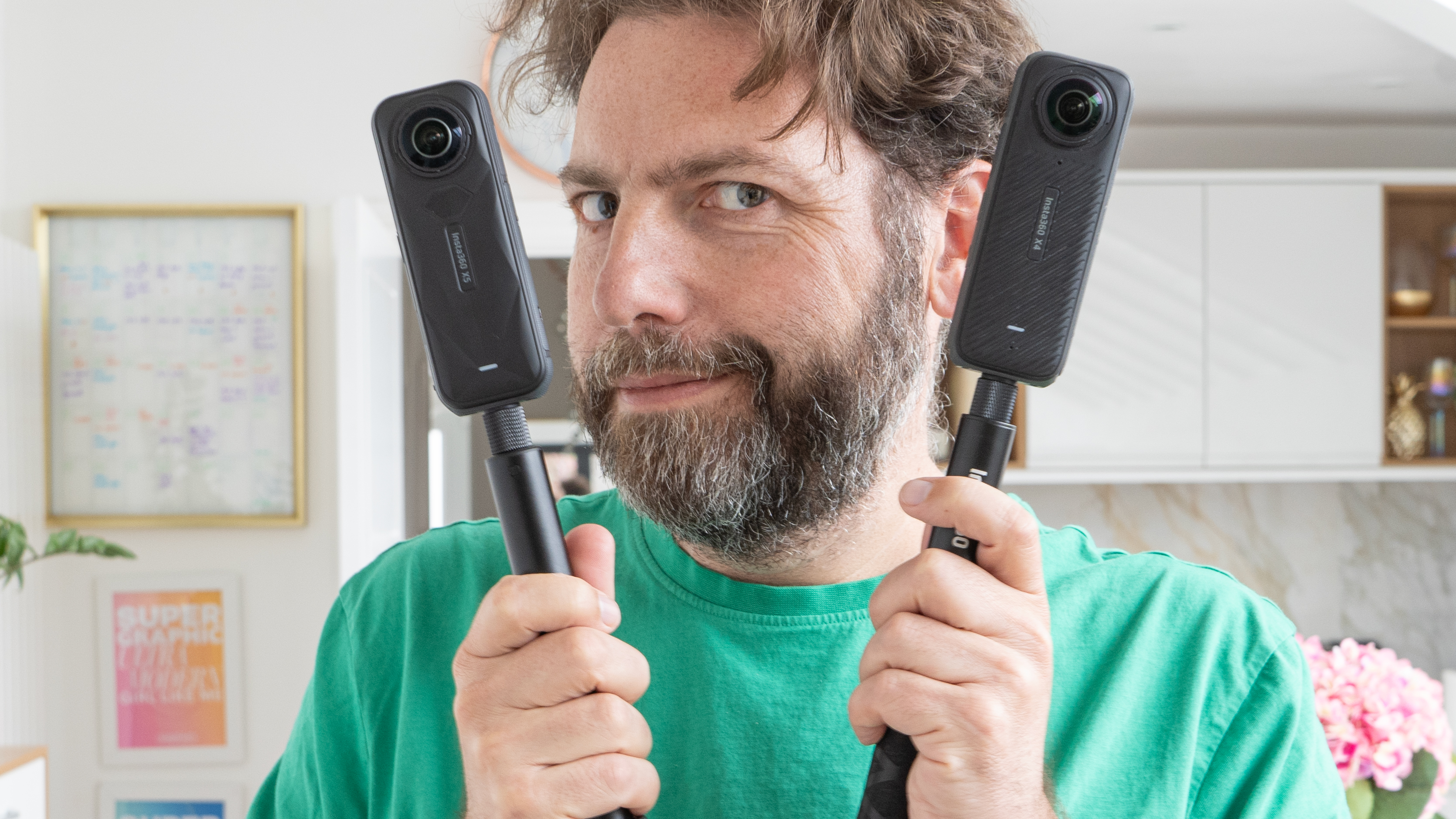F2 bokeh battle: how much does sensor size affect background blur REALLY?
We compare three 35mm f/2 equivalent lenses on MFT, APS-C and full frame cameras. Does sensor size matter... and why?

First of all, let’s be clear: depth of field and bokeh are not the same. However, the word bokeh is being used more and more to describe background blur and shallow depth of field in general, so it looks like the distinction between these two terms will continue to grow ever more blurred (depth of field joke there).
Increasingly, photographers talk about 'bokeh' when they actually mean shallow depth of field, which confuses things. You can have lenses that offer very shallow depth of field but not very nice bokeh and there are lenses (Leica M lenses, for example), that do not have the fastest apertures but produce a beautiful 'bokeh' effect when you do get out of focus areas.
What is depth of field?
Depth of field is how quickly things go out of focus in front of and beyond the object you’ve focused on. With shallow depth of field, only the subject itself is properly sharp and things nearer or further away are very blurred. With deep depth of field, everything looks sharp from right up close to the camera to far away – the sharpness falls away much more slowly.
Depth of field depends on the lens focal length, the lens aperture and the distance of the subject. Longer focal lengths, wider apertures and shorter focus distances all make the depth of field more shallow.
What is bokeh?
Bokeh is the visual quality of out-of-focus areas. It’s got nothing to do with how out of focus they are, or the depth of field, but how blurry outlines or highlights are rendered. ’Nice’ bokeh is a very desirable quality in a lens, but many folk now use it to mean shallow depth of field in general, so in trying to keep these terms separate we might just be swimming against the tide here.
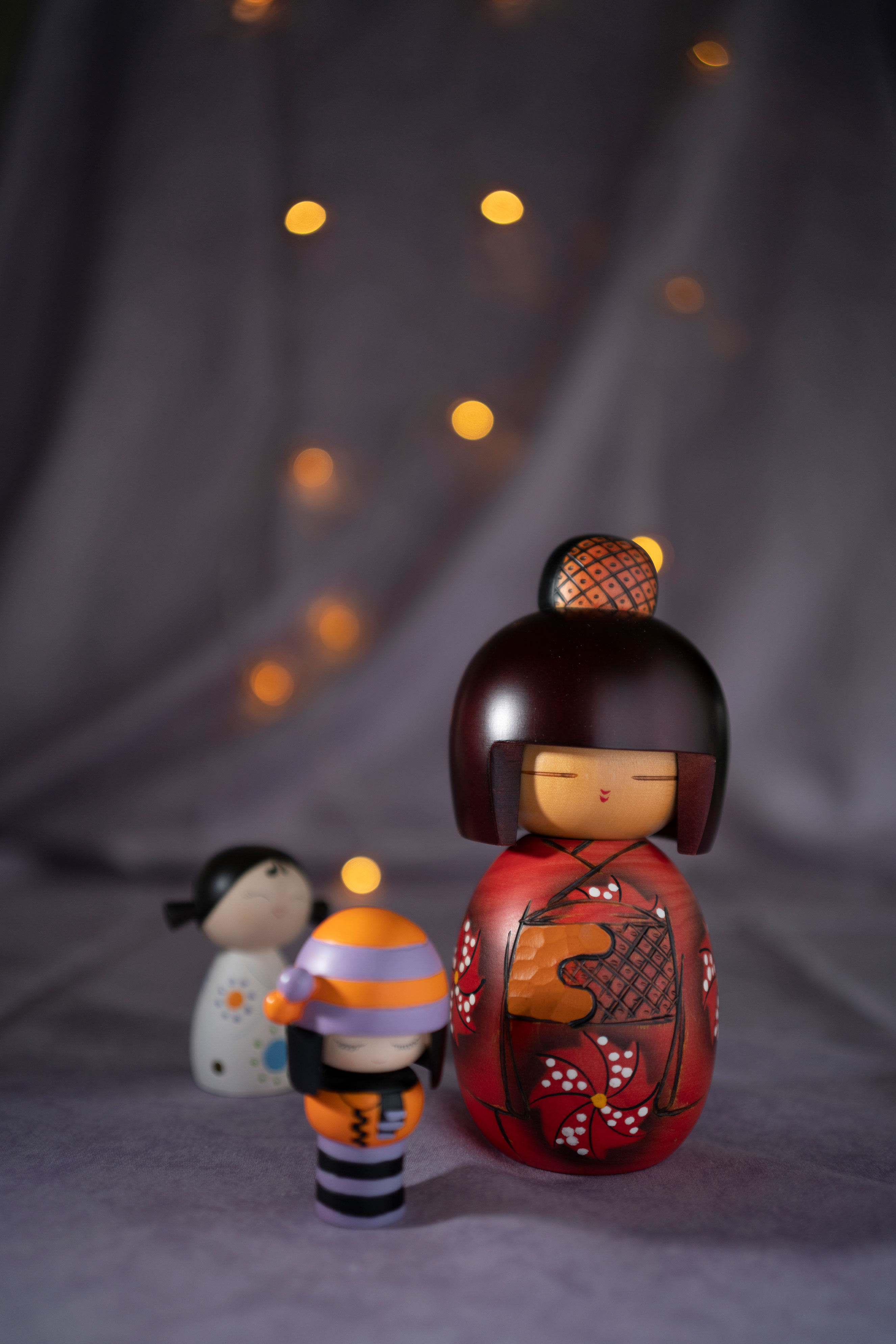
How does sensor size affect depth of field?
Any lens expert will tell you that a lens has the same depth of field regardless of the size of the sensor, and they are right.
But this misses a crucial point. We choose lenses for their angle of view, and on a smaller sensor camera you need a shorter focal length to get the same angle of view. And shorter focal lengths mean more depth of field.
Get the Digital Camera World Newsletter
The best camera deals, reviews, product advice, and unmissable photography news, direct to your inbox!
The cameras and lenses we tested
We shot the same scene with three different cameras with 35mm equivalent lenses that can shoot at f/2:
- Olympus OM-D E-M5 Mark III with M.Zuiko Digital 17mm f/1.8 lens. Sensor size MFT, crop factor 2x, effective focal length 34mm.
- Fujifilm X100V with fixed Fujinon 23mm f/2 lens. Sensor size APS-C, crop factor 1.5x, effective focal length 35mm.
- Sony A7R II with Sigma 35mm f/2 DG DN Contemporary, sensor size full frame, no crop factor, effective focal length 35mm.
Depth of field differences at f/2
We have normalized these images for white balance and exposure, but the same focus point was used for each shot – the face of the larger red doll – and all of these shots were taken at f/2.
We then tiled these three images vertically in Photoshop side by side on a 4K monitor so that you can compare them properly – you can click on the top right corner of the screenshots below to see a larger version.
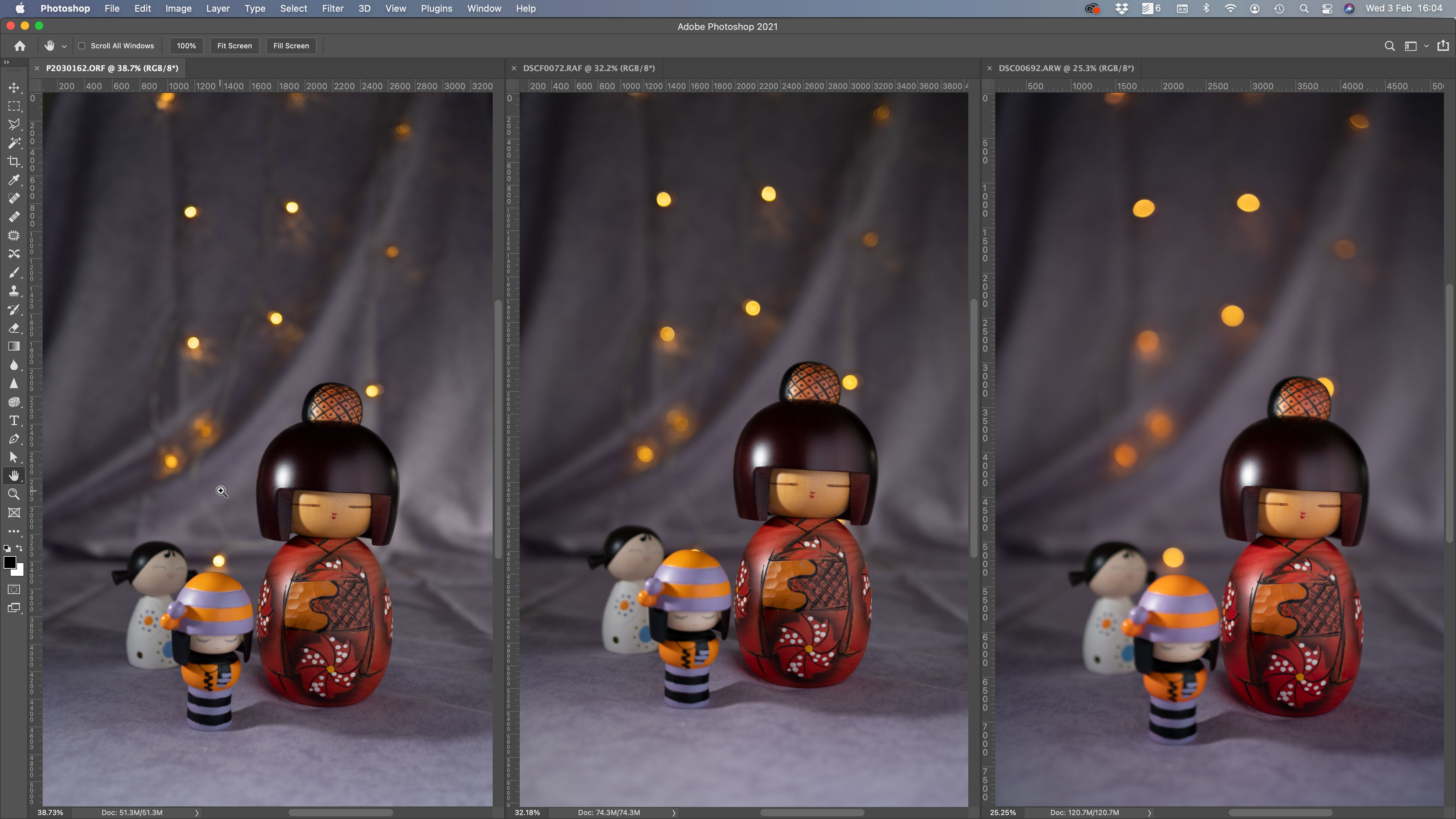
The results are very interesting. Even with the images zoomed out so that they fill the window, you can see that while all three shots have blurred backgrounds, the one in the Olympus image (left) is less blurred than the Fujifilm image (center) and the Sony image (right) is more blurred than the others.

Here is the same comparison but with the images zoomed in to show the differences more clearly. If you like maximum background blur, the Sony is the clear winner here, but the Fujifilm is almost as good and the Olympus is all right.
It’s not all good for big sensors. We deliberately positioned the two smaller dolls in front of and behind the larger one, and you can see that it’s not just the background that has blurred – these have drifted out of focus too.
Depth of field is pretty unforgiving. You can exploit shallow depth of field if you’re careful, but everything in the frame that you want sharp has to be exactly the same distance from the camera.
But what if you WANT depth of field?
We ran the same test again, but at f/11. Most lenses go to f/16 or f/22 but we find in our lab tests that diffraction effects become visible with most lenses at f/16 and beyond, so you probably wouldn’t want to do that if you could avoid it.
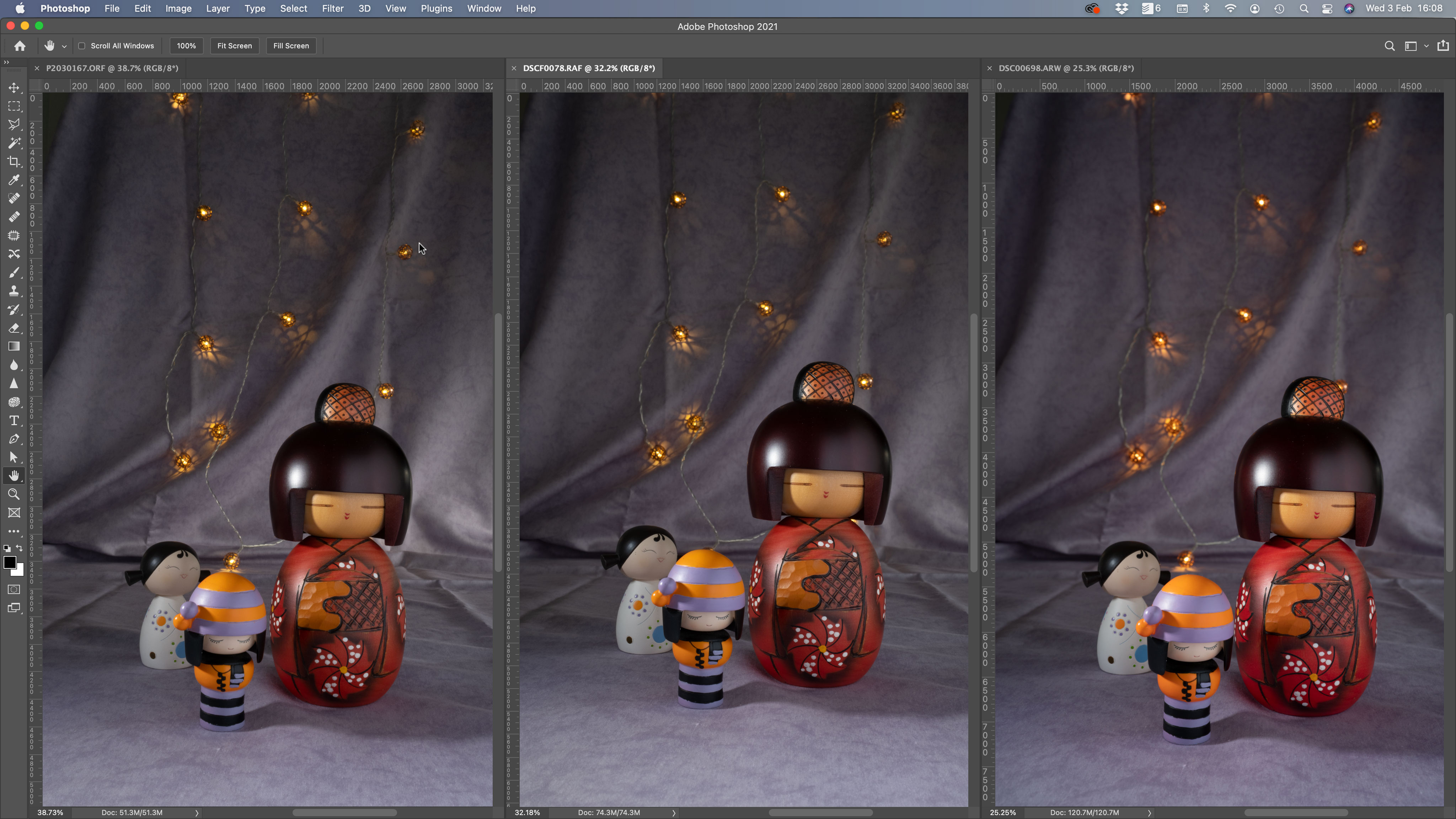
At f/11, it’s pretty clear that the Olympus produces more depth of field than the Fujifilm and way more than the Sony.
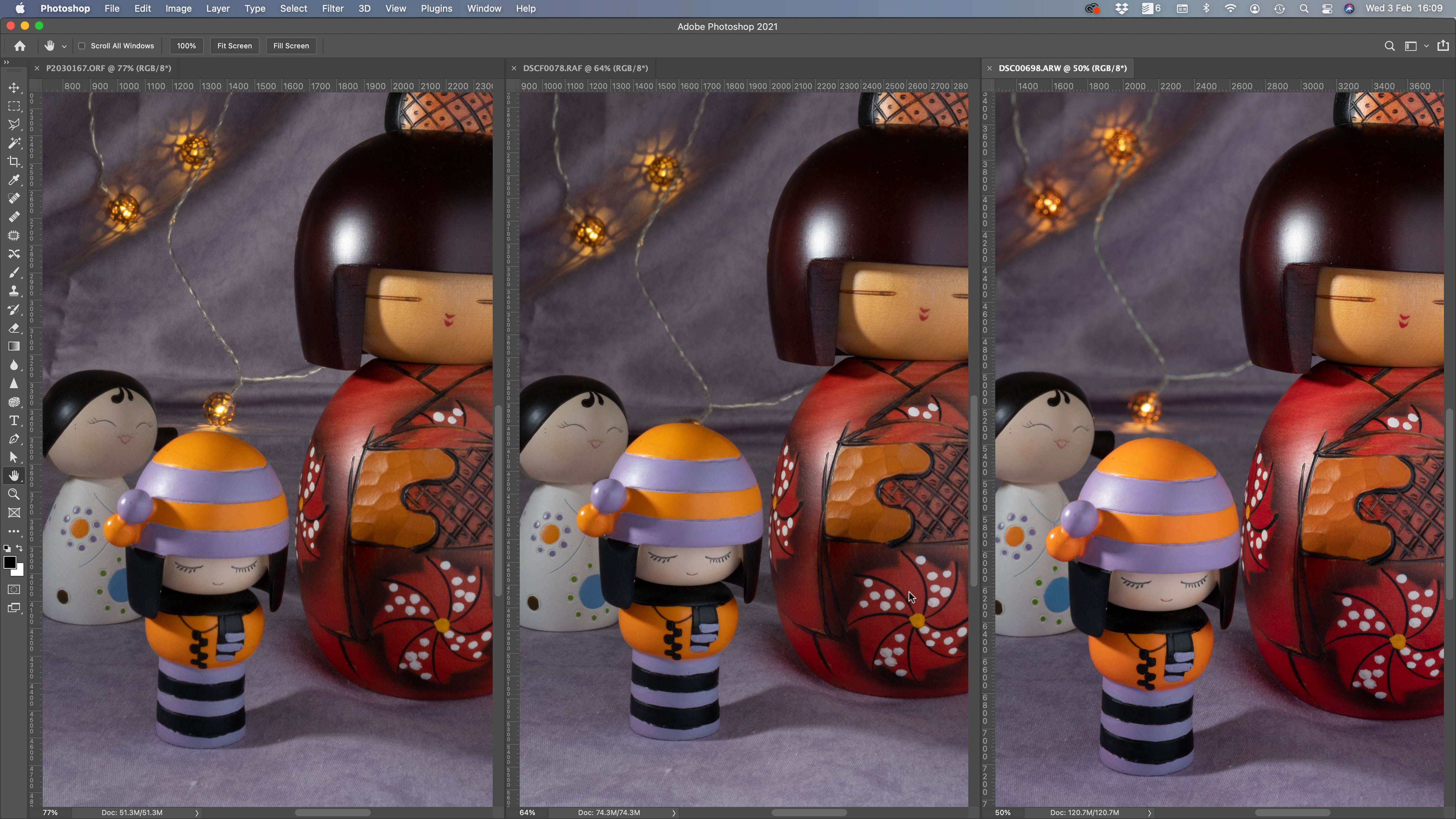
If we zoom in, the differences are even easier to see. If we wanted both our subject and our background sharp, the Olympus comes closest to achieving that. It’s still not completely sharp, but from normal viewing distances it’s sharp enough to identify the detail of the lamps in the background.
It’s not so good for the full frame Sony. Even at f/11, that background is still blurred. Its full frame sensor is best for ultra-shallow depth of field, but it becomes a liability if you need maximum near-to-far sharpness.
Can you calculate the differences?
You can! There are complex mathematical formulae for working this out which suggest that there’s an approximate 1-stop difference between Micro Four Thirds and APS-C and a further stop between APS-C and full frame.
Calculations are all very well, but does this work out in practice? It does! We shot our test scene at every aperture from f/2 to f/11 with each camera, then compared the background blur for each image to work out lens aperture and depth of field ‘equivalents’ across the three formats.
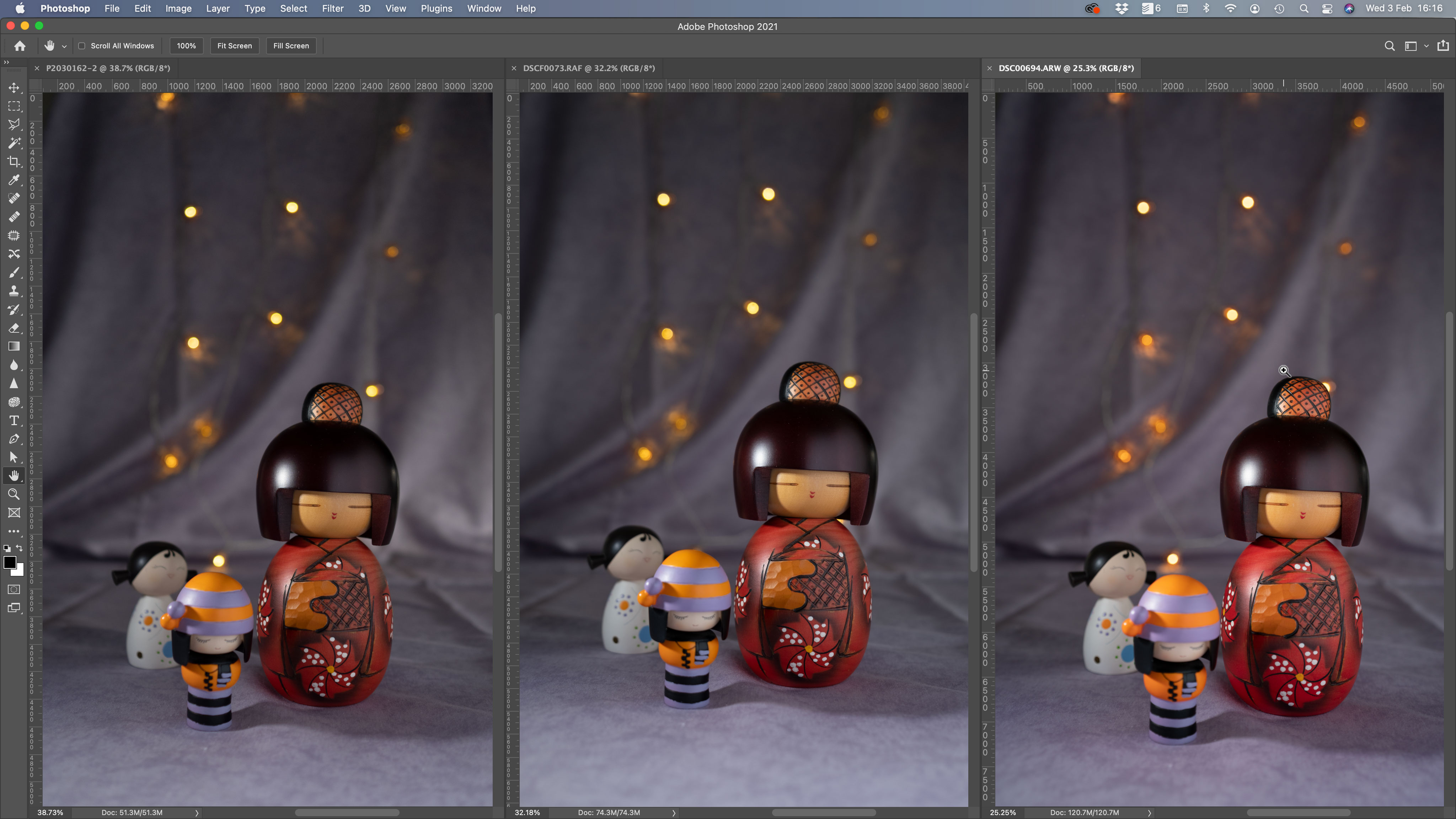
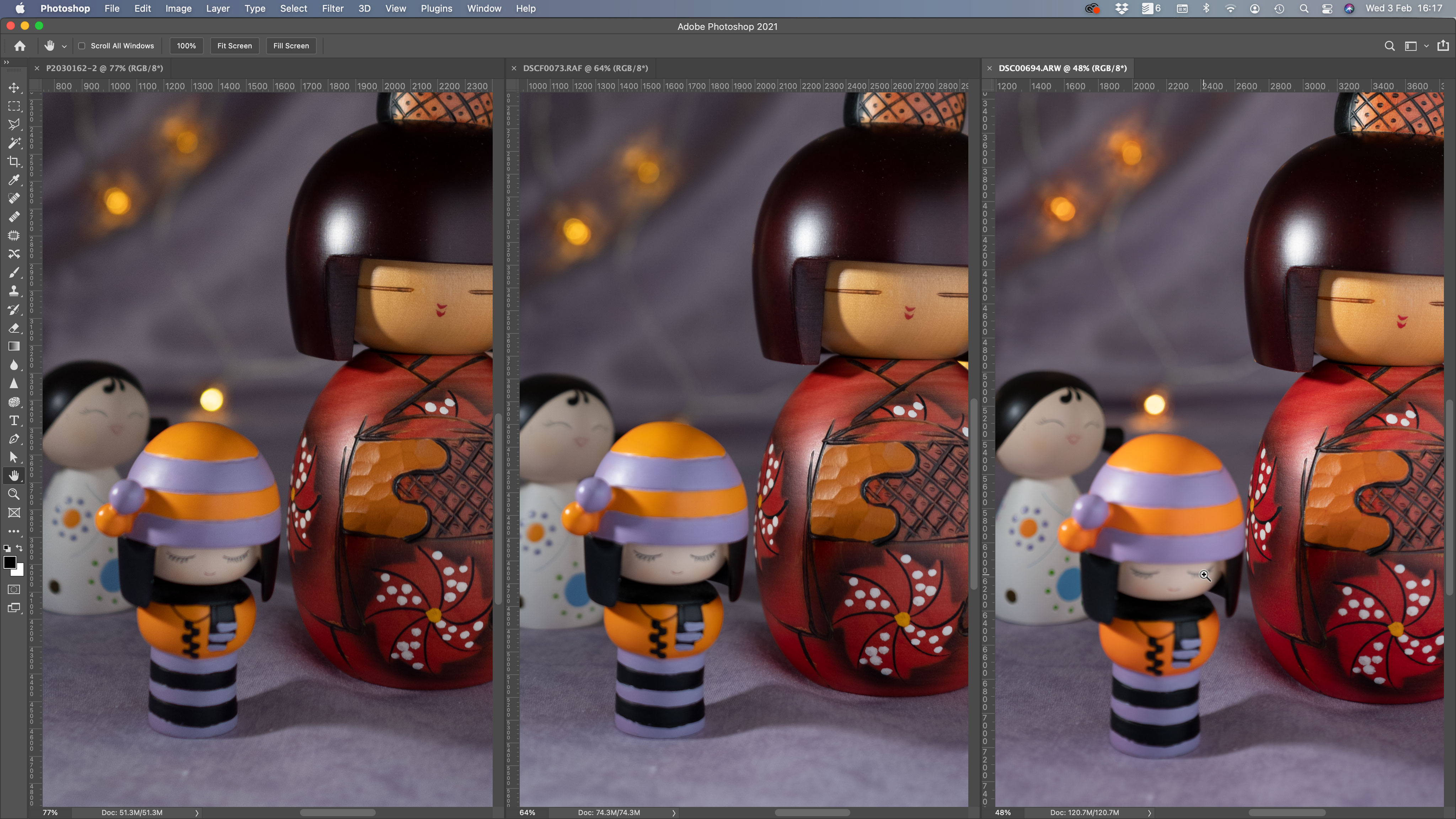
Here are our results. We started with the Olympus f/2 image (left) then found the Fujifilm image that gave a similar degree of background blur (f/4) and did the same with the Sony images (f/5.6).
The image don’t look exactly the same – but the highlight discs in the background are the same size, which is probably about the most accurate measure we are likely to get in this kitchen table test.
Top five depth of field takeaways
- Bigger sensors give shallower depth of field because you use longer focal lengths to get the same angles of view.
- Full frame sensors are great for shallow depth of field, but can be difficult when you need as much depth of field as possible.
- Smaller format lenses aren’t so good for shallow depth of field, but make it easier to achieve near-to-far sharpness.
- An f/2 lens on Micro Four Thirds will give depth of field equivalent to f/2.8 on an APS-C camera and f/4 on full frame.
- If you want to match an f/2 lens on a full frame camera, you would need an f/1.4 lens on APS-C and an f/1.0 lens on Micro Four Thirds.
Read more:
• Best lenses for bokeh
• Best 35mm lenses
• What is a prime lens?
• What is depth of field?

Rod is an independent photography journalist and editor, and a long-standing Digital Camera World contributor, having previously worked as DCW's Group Reviews editor. Before that he has been technique editor on N-Photo, Head of Testing for the photography division and Camera Channel editor on TechRadar, as well as contributing to many other publications. He has been writing about photography technique, photo editing and digital cameras since they first appeared, and before that began his career writing about film photography. He has used and reviewed practically every interchangeable lens camera launched in the past 20 years, from entry-level DSLRs to medium format cameras, together with lenses, tripods, gimbals, light meters, camera bags and more. Rod has his own camera gear blog at fotovolo.com but also writes about photo-editing applications and techniques at lifeafterphotoshop.com
